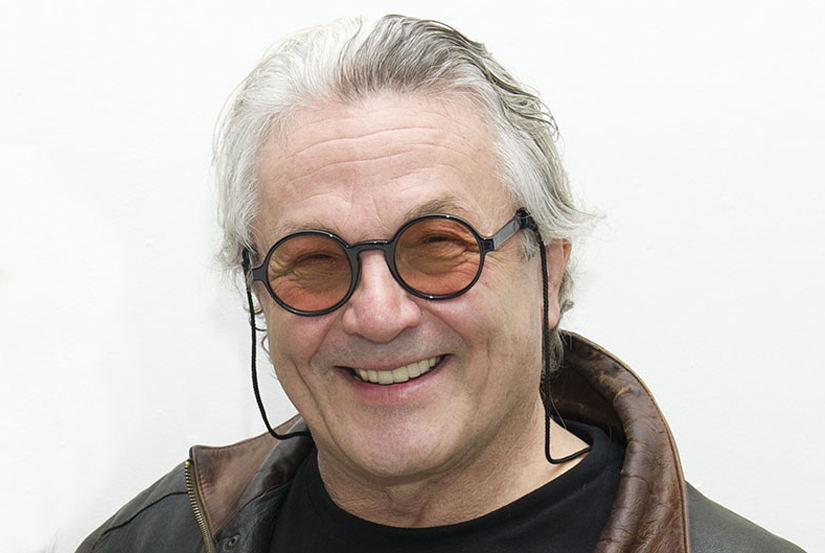
- Golden Globe Awards
George Miller
“Woke up to this unexpected news. Got out of bed. Did a little dance. The HFPA made me dance! Extremely grateful for this recognition of the hard work and dedication of our superbly talented cast and crew.” Australian director George Miller has emerged as a player in this award season with his critical and commercial summer box office hit Mad Max: Fury Road collecting accolades in several major film awards as well as two nominations for the Golden Globes.At 70, the veteran director brought back the world of Mad Max that put him on the map over three decades ago, and his fourth installment after 17 years of development swept away any reservations Mad Max fans might have had successfully introducing his vision of post-apocalyptic future to a new generation.“It’s like bringing the band back together again. I guess if the Rolling Stones can do it, we can do a little version.” Miller said jokingly. He drafted his DP Johnny Seale out of retirement and reunited with his stunt coordinator Guy Norris, who was 21 years old when he worked on the second Mad Max. Miller also talked his wife, film editor Margret Sixel, into sifting through 480 hours of footage despite the fact that she’s not that into action film. “If a guy did it, it would look like every other action film,” Miller said,” and she’s got a very low-boredom threshold.”Miller didn’t study to be a filmmaker. In fact, he went to medical school to become a doctor. It was during medical school that he and his twin brother, John Miller, made a one minute short film that won a prize: to attend a month long film camp for free at Melbourne University. In that workshop Miller met his fellow student and future collaborator Byron Kennedy. Together, they made Violence in the Cinema, Part I, a twenty-minute short film that went on to win an Australian Film Institute Award. Miller continued to divide his time between his work as a doctor and writing screenplays. He made his directorial debut in 1979 with Mad Max, his imagination of a lawless post apocalyptic future.The action film caused a sensation in the cinematic world and is credited as the beginning of Australia New Wave, and the wave yielded the sequel: Mad Max 2: The Road Worrier in 1981. The franchise made the then unknown Aussie actor Mel Gibson an international superstar, and the Miller-Kennedy production company was formed to launch the films. The following year Hollywood called. Steven Spielberg invited Miller to direct part of Twilight Zone: The Movie alongside John Landis, Joe Dante, and Spielberg himself. Miller's Nightmare at 20,000 Feet with John Lithgow as an airline passenger, who must convince his fellow travelers that he is not crazy after seeing an imp crawling along the wing of the plane, became the most talked about segment of the film.Later that year, Miller lost his friend and partner Kennedy to a helicopter crash. A few years later he decided to forge on to the third installment of Mad Max: Beyond Thunderdome starring Gibson and American music powerhouse rocker Tina Turner. The movie did so well that Hollywood offers started pouring in, but after directing The Witches of Eastwick, Miller went back to shepherd Australian productions and projects while grooming Aussie talents like Nicole Kidman in Dead Calm and Flirting.During the 90s, Miller continued to produce, write and direct. His emotional drama Lorenzo’s Oil garnered his first Oscar nomination, and he found his biggest international appeal with Babe, a beloved fantasy about a talking pig. The film earned seven Oscar nominations, and won his first Golden Globes Award for Best Motion Picture Musical/Comedy.Having explored other genres, Miller started toying with the idea of reviving Mad Max, his first creation and inspiration. But first, he tackled another form he hadn’t previously tried: the musical animated movie Happy Feet, inspired by a documentary about penguins. It became an international hit and won Miller his first Oscar award in the category of Best Animation Feature.The fourth Mad Max went into production in 2011, after years of delays and setbacks, with Tom Harding eventually replacing Mel Gibson as the lead. It introduces female warrior Furiosa, played by Charlize Theron as co-protagonist alongside the Road Warrior. Now that George Miller’s passion project enters the best picture race and becomes the only summer action movie which lingers in the award season, fans can rest assured that the sequels to this franchise won’t be delayed for another 30 years.Lynn Tso

